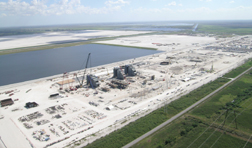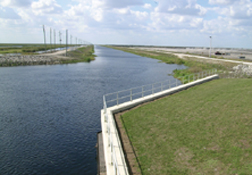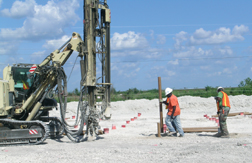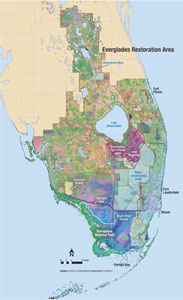 South Florida Water Management District Everglades’ peat must be removed for reservoir construction.
|
 |
| APPELBAUM |
Hope was trampled as competing visions of the Everglades’ future fought for supremacy. Finally, with no one’s vision fully realized, stakeholders accepted that the deadlock itself was the greatest threat to the Glades’ survival. Eight years ago, hope revived as consensus formed around an effort to save the Everglades with the largest ecosystem restoration in history. The Water Resources Development Act (WRDA) of 2000 established the Comprehensive Everglades Restoration Plan (CERP), with an estimated $7.8-billion cost, to be shared equally between the federal government and Florida.
But hope flagged again as years passed with no new funding for the program. Its cost now is estimated at $10.9 billion and is rising, its completion optimistically set for some time in the 2030s or maybe 2040. Its breath-taking goal is to restore the natural hydrologic conditions and ecosystem of 18,000 sq miles of engineered landscape and seascape without harming the interests or infringing upon the rights of the 6.5 million people who depend on the artificial environment.
| + click to enlarge |
|
U.S. Army Corps Of Engineers |
Planners are proceeding with extreme caution because of the unprecedented nature of the restoration and the recognition that hard engineering without thought for environmental consequences was what caused the damage in the first place. “We don’t want to make a negative impact and call it an environmental restoration project,” says Kenneth G. Ammon, deputy executive director at the South Florida Water Management District (SFWMD), West Palm Beach, the state agency responsible for Everglades restoration.
“The most significant thing that has come to light over the last seven years is the realization that we need to apply ‘incremental adaptive restoration’,” says Ammon. That means trying innovative solutions for hydrology and water-quality problems on a pilot scale and testing the results with science and modeling methods before building large components that operate on the model. It’s an approach recalling the old construction adage, “Measure twice, cut once,” enforced here by limited funding as well as awareness of the potential for doing harm.
Fresh Hope
 Thomas F. Armistead / ENR |
 Thomas F. Armistead / ENR |
 Thomas F. Armistead / ENR |
 Thomas F. Armistead / ENR Protesters fear new powerplant will encourage further development (Topmost). Supply canal (2nd from top) will feed runoff to the reservoir being built (above) and and stormwater treatment area.
|
Today, hope is budding again in the Everglades. In January 2007, Gov. Charlie Crist (R) took office. In March, he asked the state Legislature to appropriate $190 million for Everglades restoration and related construction projects. Over the next few months, he appointed five new members, known for their Everglades activism, to SFWMD’s nine-member governing board.
A year later, his actions have elicited praise from a leader of the Everglades Coalition, an alliance of 47 environmental organizations that have seldom felt much warmth for state governments. “We’re all really excited about Gov. Crist. He’s much more open,” says Drew Martin, coalition co-chair. “There’s been a change in the new administration.”
Action in Congress also has inspired hope. In November, after seven years without a Water Resources Development Act, Congress overturned President Bush’s veto and passed WRDA 2007, authorizing $1.82 billion for three Everglades projects. That law was psychologically effective because “it got the authorization ball rolling again,” says Stuart J. Appelbaum, Everglades division chief for the U.S. Army Corps of Engineers’ Jacksonville, Fla., district. But authorization must be followed by appropriation. Ammon expects it this year.
Tamiami Trail
Hope blossomed in January, when Lynn Scarlett, assistant secretary of the U.S. Interior Dept., told the annual Everglades Coalition conference, “We are determined to get the Tamiami Trail project moving forward this year.” She pledged to “get a shovel in the ground” by September.
That project will elevate a stretch of U.S. Route 41 to restore the broad, shallow “sheetflow” of water through Shark River Slough, the Everglades National Park’s...
ope is the most fragile natural resource in Florida’s Everglades. Its pioneer farmers’ hopes for bountiful yields from the rich peat soil were overwhelmed by Florida’s violent weather, which swamped them with floods from vast Lake Okeechobee. The hopes of its latter-day defenders for quick action to save the dying ecosystem have been ground down by the deliberate pace of planning and the failure of Congress to authorize funds for the plans.

Post a comment to this article
Report Abusive Comment